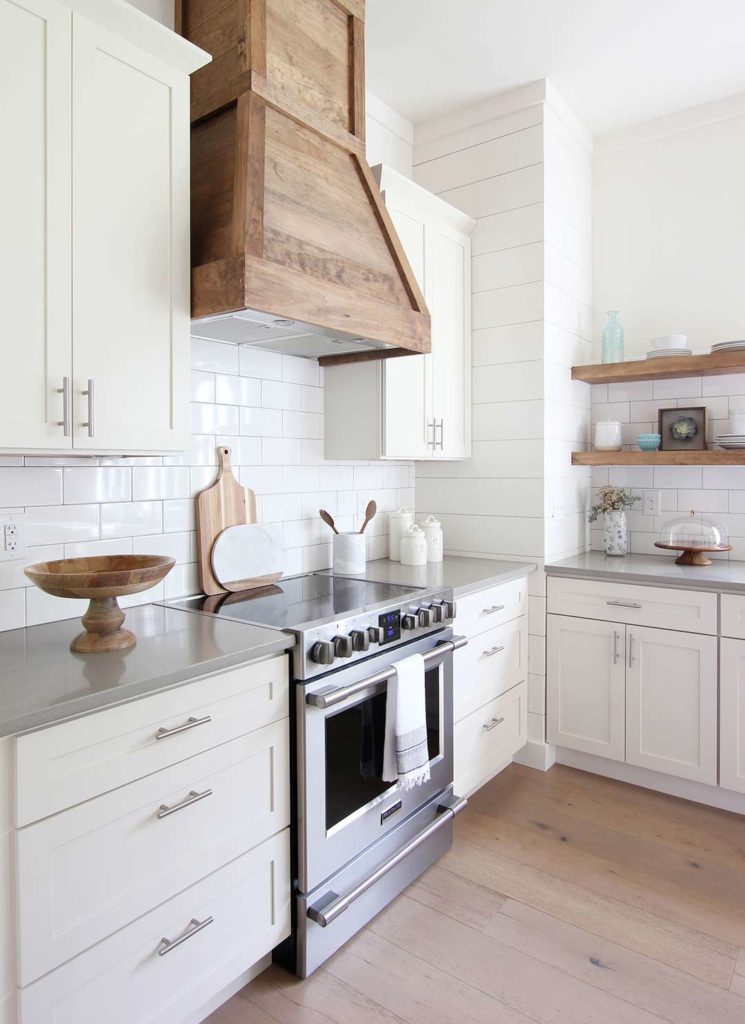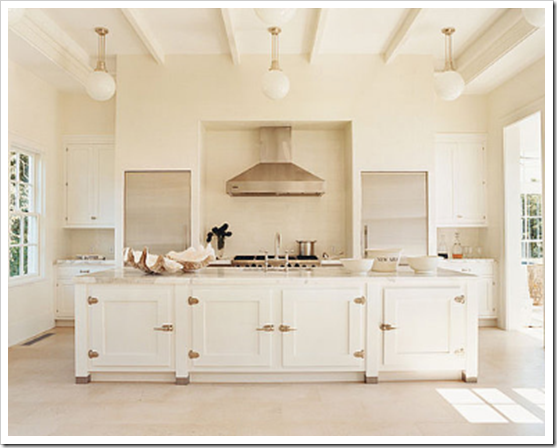Kitchen cabinets and walls can be the same color for a cohesive look. Different colors can add contrast and depth.
Choosing whether to match kitchen cabinets and walls depends on your desired aesthetic. Matching colors create a seamless, harmonious look, making the space feel larger and more unified. On the other hand, contrasting colors can highlight architectural features and add visual interest.
Light-colored cabinets with darker walls can make the kitchen feel warm and inviting. Dark cabinets with light walls can create a modern, sophisticated atmosphere. Consider your kitchen’s lighting, size, and overall theme when deciding. Both options can work beautifully if executed thoughtfully.
Table of Contents
TogglePros Of Matching Colors
Matching your kitchen cabinets and walls can create a harmonious look. This design choice offers several benefits. Let’s explore the key advantages of this trend.
Seamless Look
A seamless look is one of the top benefits. Matching colors can help your kitchen appear more unified. The visual flow between cabinets and walls becomes smooth. This can make your kitchen feel more inviting.
Uniform colors reduce visual clutter. This simplicity can make your kitchen appear neater. A seamless look can be achieved with various color palettes. Whether you choose bold or neutral shades, matching colors can elevate your kitchen’s style.
| Color Palette | Effect |
|---|---|
| Neutral Colors | Creates a calm and serene space |
| Bold Colors | Adds energy and vibrancy |
| Pastel Shades | Offers a soft and welcoming feel |
Perception Of Space
Matching colors can enhance the perception of space. Uniform colors can make your kitchen seem larger. This is especially beneficial in smaller kitchens. The absence of contrasting colors minimizes visual interruptions. This can give an illusion of extended space.
Choosing lighter shades can further amplify this effect. Light colors reflect more light. This can brighten up your kitchen. A brighter kitchen often feels more spacious. Thus, matching colors can be a strategic choice for optimizing space perception.
- Light Colors: Reflect more light, make space feel bigger
- Uniform Colors: Reduce visual interruptions, enhance spacious feel

Cons Of Matching Colors
Choosing to have kitchen cabinets and walls in the same color might seem like a good idea. But there are several downsides to this design choice. Below, we discuss some of the cons of matching colors in your kitchen.
Monotony Risk
One major downside is the risk of monotony. A kitchen with all the same color can look dull. It may lack the visual interest that different colors bring.
People often prefer a bit of contrast. It helps in breaking the visual uniformity. This makes the space more appealing and dynamic.
Here is a simple table showing the visual impact of matching vs. contrasting colors:
| Matching Colors | Contrasting Colors |
|---|---|
| Dull and monotonous | Vibrant and dynamic |
| Lacks visual interest | Enhanced visual appeal |
Maintenance Challenges
Matching colors can also pose maintenance challenges. Dirt and stains become more noticeable on uniform surfaces. This is especially true in a kitchen setting.
Different colors can help hide imperfections. For example, darker cabinets might hide stains better than lighter walls. This can save you time and effort in cleaning.
Here are some maintenance tips for matching color kitchens:
- Use stain-resistant paint for walls.
- Clean surfaces regularly to avoid buildup.
- Consider using a backsplash to protect the walls.
These tips can make maintenance easier. But they don’t eliminate the challenges entirely. So, think carefully before deciding on a single color for both cabinets and walls.
Expert Opinions
Choosing kitchen colors can be tricky. Should kitchen cabinets and walls be the same color? Let’s hear what experts say about this topic.
Interior Designers’ Take
Interior designers often have strong opinions on kitchen colors. They focus on harmony and balance.
- Harmony: Matching colors create a seamless look.
- Contrast: Different colors can add depth and interest.
Designers also consider the size of the kitchen. A small kitchen may benefit from matching colors. It can make the space feel bigger.
On the other hand, a large kitchen might look more dynamic with contrasting colors. It adds visual interest.
Painters’ Perspective
Painters have practical insights on this topic. They consider ease of application and maintenance.
- Ease of Application: Using one color simplifies the painting process.
- Maintenance: Similar colors can hide minor imperfections better.
Painters also think about the type of paint. Satin finishes are good for cabinets. Matte finishes may be better for walls.
They often recommend using the same color but different shades. This can create a cohesive yet interesting look.
Alternative Approaches
Are you tired of the same color scheme in your kitchen? Explore alternative approaches to make your kitchen stand out. Using different colors and styles can transform your space.
Accent Walls
An accent wall can add a bold touch to your kitchen. Choose a color that contrasts with your cabinets. This makes the wall a focal point. Bold colors like red or blue work well. You can also use patterns or textures. Wallpapers with unique designs can be a great choice.
Consider the wall behind the stove or sink for the accent. This draws the eye to key areas of the kitchen.
Two-tone Cabinets
Two-tone cabinets offer a modern look. Use one color for upper cabinets and another for lower ones. This adds depth and interest. Popular combinations include white and gray or navy and white.
| Upper Cabinets | Lower Cabinets |
|---|---|
| White | Gray |
| Navy Blue | White |
| Light Green | Dark Green |
You can also mix materials like wood and paint. Wood adds warmth and texture. Painted cabinets offer a clean, sleek look. This approach works well in both traditional and modern kitchens.
Popular Color Combinations
Choosing the right color combinations for kitchen cabinets and walls can transform your space. The right mix creates harmony and style. You can opt for neutral palettes or go for bold contrasts.
Neutral Palettes
Neutral colors offer a timeless and elegant look. They are versatile and easy on the eyes. Popular neutral combinations include:
- White cabinets and light gray walls
- Beige cabinets and cream walls
- Soft taupe cabinets and off-white walls
Neutral palettes make your kitchen appear larger. They also provide a clean and calming atmosphere. Neutral tones are easy to match with various decor styles.
Bold Contrasts
Bold contrasts make your kitchen stand out. They add energy and personality to the space. Some striking combinations are:
- Navy blue cabinets and white walls
- Black cabinets and pale yellow walls
- Forest green cabinets and light beige walls
Bold contrasts create a focal point in your kitchen. They are perfect for making a statement. Contrast adds depth and interest to the room.
Tips For Choosing Colors
Choosing the right colors for your kitchen cabinets and walls is crucial. The right colors can make your kitchen look spacious and inviting. Here are some tips for choosing colors for your kitchen cabinets and walls:
Sample Testing
Always test color samples before making a final decision. Paint small sections of your walls and cabinets. Observe them at different times of the day. This helps you see how the color looks under various lighting conditions.
Lighting Considerations
Lighting plays a significant role in how colors appear. Natural light can make colors look different than artificial light. Ensure you check how the color looks under your kitchen’s lighting. Use soft white bulbs to mimic natural light. For a warmer look, use warm white bulbs.
| Type of Lighting | Effect on Colors |
|---|---|
| Natural Light | Colors appear true to their shade. |
| Artificial Light | Colors may look warmer or cooler. |
| Soft White Bulbs | Best for a natural look. |
| Warm White Bulbs | Best for a cozy atmosphere. |
Consider the amount of natural light your kitchen receives. A bright kitchen can handle darker colors. A darker kitchen might benefit from lighter shades.
Here is a quick checklist for choosing your kitchen colors:
- Test samples on both walls and cabinets.
- Check colors under different lighting conditions.
- Consider the room’s natural light when choosing colors.
Case Studies
Exploring case studies helps us understand the impact of matching kitchen cabinets and walls. Real-life examples provide insights into design choices. Before and after photos reveal the transformation and results.
Real-life Examples
Various homeowners have tried matching their kitchen cabinets and walls. These real-life examples illustrate the effects of this design choice:
- Example 1: A small apartment kitchen in New York. The owner chose a soft white color for both cabinets and walls. This made the space appear larger and brighter.
- Example 2: A farmhouse kitchen in Texas. Here, both walls and cabinets are painted in a rustic blue. This provided a cohesive and serene look.
- Example 3: A modern home in California. The kitchen features sleek grey cabinets and walls. This created a minimalist and sophisticated feel.
Before And After
Before and after photos can vividly show the difference matching colors can make. Let’s look at some transformations:
| Before | After |
|---|---|
|
Kitchen 1: Originally had dark cabinets with white walls. The space felt smaller and disconnected. |
Kitchen 1: Post-renovation, both cabinets and walls were painted soft beige. The room now feels more open and harmonious. |
|
Kitchen 2: Featured mismatched colors with yellow walls and green cabinets. The look was chaotic. |
Kitchen 2: After matching the colors to a pastel green, the kitchen looks calm and unified. |
These transformations show how color matching can enhance kitchen aesthetics. Matching colors can make a space feel larger, cohesive, and serene.


Frequently Asked Questions
Should Kitchen Cabinets Match Wall Color?
Matching creates a cohesive look, but contrast adds interest. Personal preference and style dictate the best choice.
What Color Should Kitchen Cabinets Be?
Cabinet color depends on your kitchen’s style. Neutral tones are timeless, while bold colors add personality.
Can Kitchen Cabinets And Walls Be Different Colors?
Yes, contrasting colors can create visual interest and define spaces. Ensure they complement each other for harmony.
Are White Cabinets Timeless?
Yes, white cabinets are classic and versatile. They brighten the space and pair well with various wall colors.
Do Dark Cabinets Make A Kitchen Look Smaller?
Dark cabinets can make a kitchen feel cozy but might shrink the space. Balance with lighter walls for openness.
How To Choose Kitchen Cabinet Color?
Consider your kitchen’s size, lighting, and style. Test samples to see how colors look in different lights.
Should Cabinets Be Lighter Than Walls?
Lighter cabinets can make a kitchen feel spacious. Darker walls add depth and contrast. Balance is key.
Are Two-tone Cabinets A Good Idea?
Two-tone cabinets add depth and interest. They can highlight specific areas and create a dynamic visual effect.
What Wall Color Goes With Gray Cabinets?
Gray cabinets pair well with white, blue, or soft pastel walls. These combinations create a modern, clean look.
Does Cabinet Color Affect Home Resale Value?
Neutral cabinet colors appeal to more buyers. They provide a blank canvas, making it easier for potential buyers to envision the space.
Conclusion
Choosing whether to match kitchen cabinets and walls depends on personal style. Matching can create harmony and seamless flow. Contrasting colors can add visual interest and depth. Consider your kitchen’s size, lighting, and design goals. Ultimately, the best choice reflects your unique taste and enhances your kitchen’s aesthetic appeal.


